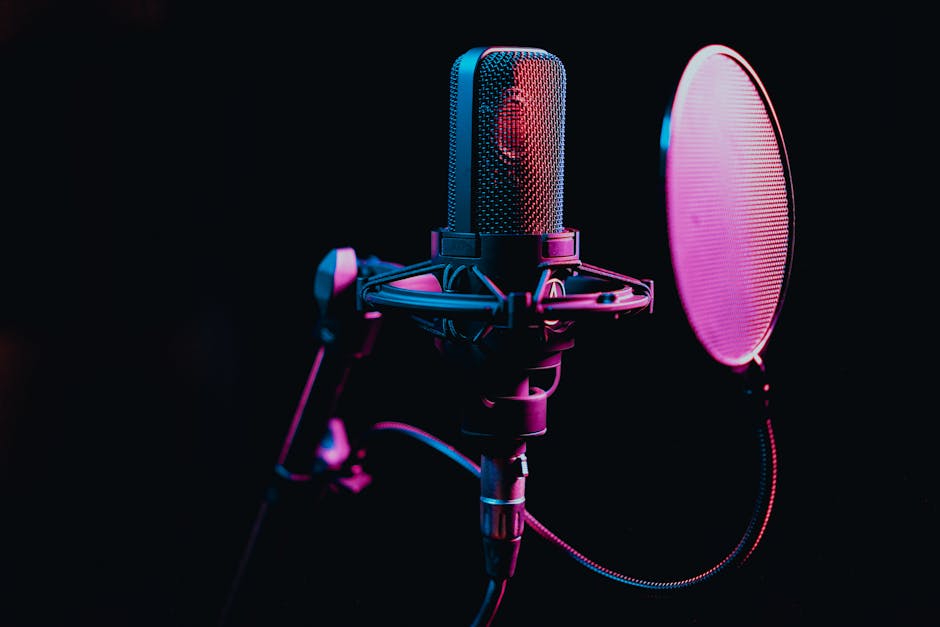My Deep Dive: Usb Vs. Xlr Microphones (which is Right for You?).
Stepping into the world of audio recording, whether for a podcast, streaming, voiceovers, or even just better-sounding video calls, quickly brings you to a fundamental crossroads: USB vs. XLR microphones. It’s a decision that can feel overwhelming, with passionate advocates on both sides and a sea of technical jargon. But don’t worry, you’re not alone. I’ve spent countless hours researching, testing, and using both types of microphones in various scenarios, and I’m here to cut through the noise. This isn’t just a generic comparison; it’s my deep dive, designed to help you understand the core differences and, most importantly, figure out exactly which microphone type aligns perfectly with your specific needs and aspirations.
Starting Your Audio Journey: Unpacking the Simplicity of USB Mics
Let’s begin with the entry point for many aspiring creators: the USB microphone. The allure here is undeniable, primarily centered around its incredible ease of use. Imagine unboxing a new gadget, plugging it directly into your computer’s USB port, and being ready to record within minutes. That’s the USB mic experience in a nutshell. These microphones essentially contain a mini audio interface and analog-to-digital converter built right into the mic itself. This means they take your voice (or instrument sound), convert it into a digital signal, and send it straight to your computer, bypassing the need for any additional external equipment.
When a USB Microphone Truly Shines for Your Setup
If you’re just starting out, working with a limited budget, or prioritizing convenience above all else, a USB microphone is often the perfect fit. Think about these scenarios:
- Podcasting on the Go: If you’re recording interviews remotely or need a portable setup for field recordings, a USB mic paired with a laptop is incredibly efficient.
- Streaming and Gaming: For live streamers and gamers who want clear communication without a complex setup, a USB mic offers excellent sound quality with minimal fuss.
- Voiceovers and Demos: Producing quick voiceovers for presentations or recording vocal demos without investing in a full studio setup is where these mics excel.
- Beginner Musicians: For those just dipping their toes into recording instruments or vocals, a USB mic provides a low-barrier entry point to capture ideas.
The immediate gratification of a USB microphone is a powerful advantage. You don’t need to understand impedance, phantom power, or gain staging right out of the gate. It’s truly plug-and-play, making it an ideal choice for anyone who wants to focus on their content rather than wrestling with technical audio configurations. However, this simplicity often comes with certain trade-offs, which we’ll explore as we delve deeper into the XLR world.
Stepping Up Your Sound: The Professional Potential of XLR Microphones
Now, let’s shift gears to the realm of XLR microphones. If USB mics are the convenient point-and-shoot cameras of audio, XLR mics are the interchangeable lens DSLRs. They offer a level of flexibility, quality, and expandability that often makes them the go-to choice for serious hobbyists and professionals alike. An XLR microphone doesn’t connect directly to your computer. Instead, it uses a three-pin XLR cable to send an analog signal to an external device called an audio interface (or mixer). This interface then converts the analog signal to digital and sends it to your computer via USB or Thunderbolt.
Why XLR Connectivity Elevates Your Audio Game
The extra step of using an audio interface isn’t just an added complication; it’s where the magic happens for XLR microphones. Here’s why many choose this path:

- Superior Preamps: Audio interfaces contain high-quality preamps that amplify the microphone’s signal cleanly, resulting in a richer, more detailed sound.
- Phantom Power: Many high-quality condenser microphones (which capture a wide frequency range with great detail) require 48V phantom power, supplied by the audio interface.
- Zero Latency Monitoring: Most interfaces allow you to monitor your audio directly through the interface itself, eliminating the annoying delay (latency) that can occur with USB mics when monitoring through your computer.
- Expandability: Need to record multiple microphones or instruments simultaneously? An audio interface with multiple inputs makes this possible, something a single USB mic cannot do.
- Durability and Reliability: XLR cables are robust, lock securely, and are less prone to interference over longer runs compared to some USB cables.
Choosing an XLR setup means investing in a system that grows with you. While the initial cost might be higher, and there’s a slight learning curve to understanding gain and monitoring, the payoff in sound quality, control, and future-proofing is significant. This path opens the door to using a vast array of professional microphones, each with its unique sonic characteristics.
Beyond the Connection: Key Differences That Shape Your Recording Experience
Now that we’ve looked at each type individually, let’s put them side-by-side to highlight the crucial differences that will truly impact your day-to-day recording life and the quality of your output. It’s not just about the cable; it’s about the entire ecosystem each connection type represents.
Dissecting Sound Quality and Control: Where Each Mic Stands
- Raw Audio Quality: While there are excellent USB microphones, generally speaking, XLR microphones connected to a good audio interface offer superior sound quality. This is due to better preamps, dedicated analog-to-digital converters, and often higher-quality microphone capsules available in the XLR market. XLR setups typically provide a cleaner signal with lower noise floors.
- Latency: USB microphones often introduce a slight delay (latency) when monitoring your voice through your computer. This can be distracting for performers. XLR setups, with their dedicated audio interfaces, usually offer direct monitoring, meaning you hear your voice with virtually no delay, which is crucial for recording vocals or instruments.
- Gain Control: XLR interfaces provide dedicated gain knobs, allowing precise control over how loud your microphone’s signal is before it hits your computer. USB mics often have simpler, sometimes less precise, gain controls or rely on software adjustments, which can be less optimal.
Ease of Use Versus Future-Proofing: A Practical Trade-off
- Setup Simplicity: USB mics win hands down here. Plug and play. XLR mics require connecting the mic to an interface, the interface to the computer, installing drivers, and configuring software. It’s not difficult, but it’s more steps.
- Portability: A USB mic is generally more portable as it’s a single unit. An XLR setup requires the mic, cable, and interface, making it slightly less convenient for on-the-go recording, though still manageable.
- Expandability and Flexibility: This is XLR’s strong suit. Want to add a second mic? Plug it into another input on your interface. Want to upgrade your mic later? Any XLR mic will work with your existing interface. USB mics are typically standalone units; if you need more inputs, you’d buy another USB mic (and run into potential software conflicts) or switch to an XLR setup entirely.
- Cost: Initially, a good USB microphone is often cheaper than buying a comparable XLR microphone plus an audio interface. However, if you plan to upgrade or expand, the long-term cost of an XLR setup can be more economical as you only upgrade individual components (mic or interface) rather than replacing an entire system.
Your Recording Goals: Matching Microphone Type to Your Creative Vision
The “right” microphone isn’t about which one is inherently “better,” but which one is better for you. Your specific recording goals and current skill level should be the primary drivers of your decision. Let’s break down typical user profiles and see which mic type aligns best.
Finding Your Perfect Mic Companion Based on Your Ambitions
- The Casual Creator / Beginner Podcaster / Gamer / Student:
- Goals: Clear audio for online meetings, casual streaming, first podcast episodes, voiceovers for personal projects, simple gaming communication.
- Priority: Simplicity, affordability, immediate results.
- Recommendation: USB Microphone. It offers excellent




Post Comment